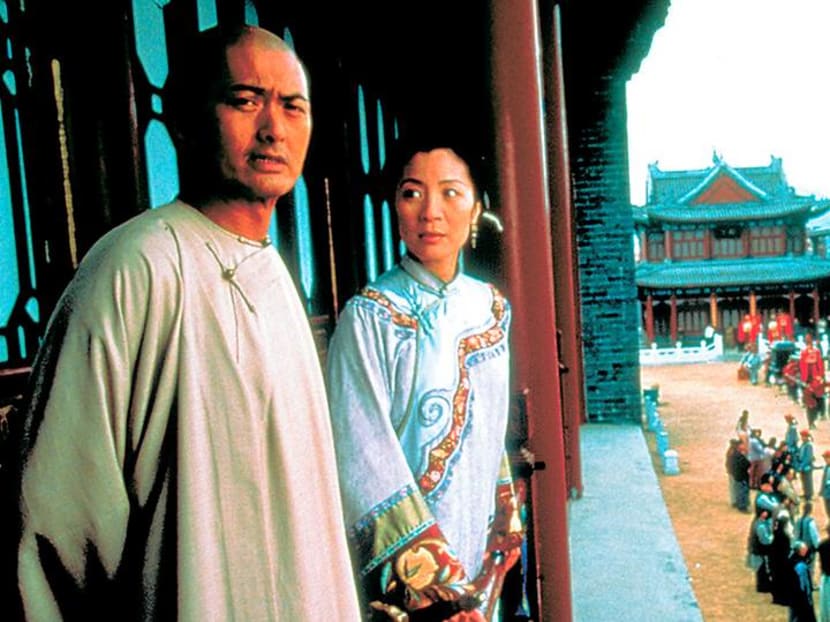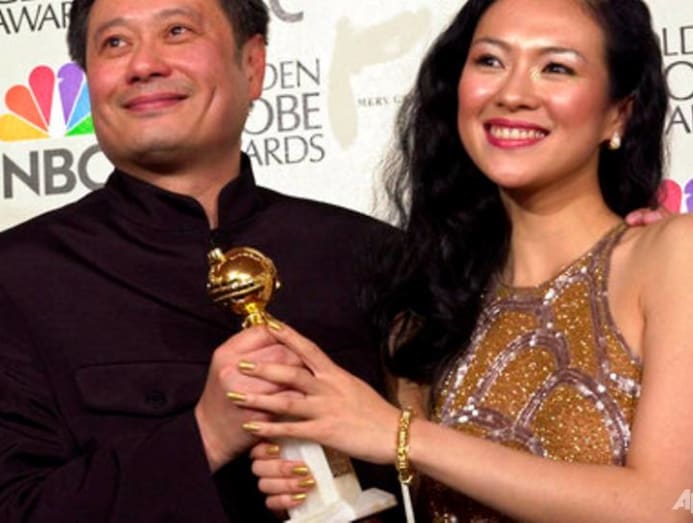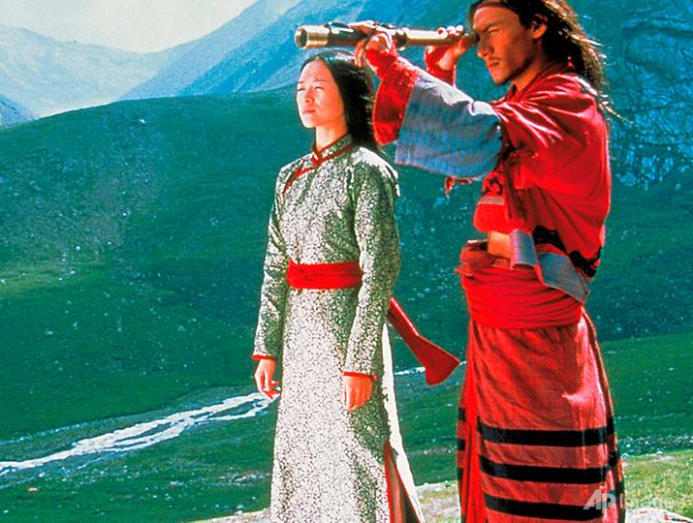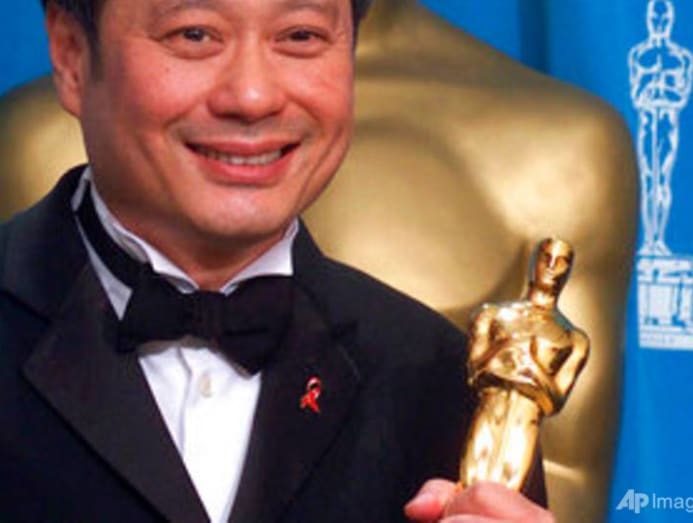Toughest movie of his life: Lee Ang on Crouching Tiger, Hidden Dragon 20 years later

This photo released by Sony Pictures Classics shows Chow Yun Fat and Michelle Yeoh in a scene from Crouching Tiger, Hidden Dragon. (Sony Pictures Classics via AP)
It’s physically impossible to get to the forest fight scene that hovers atop slender bamboo trees in Crouching Tiger, Hidden Dragon and not say out loud “Whoa”.
Twenty years later, the exhilarating grace of Lee Ang’s martial-arts masterwork is just as breathtaking. The way figures glide across the water. The extraordinary lightness of it. Its craft and choreography are only further evidence of a mantra uttered in the film: “A sword by itself rules nothing. It only comes alive in skilled hands”.

Take that scene, where Chow Yun Fat and Zhang Ziyi clash in a dance across bamboo stalks. Asked what he remembers about shooting it, Lee doesn’t hesitate: The sweating. Not from heat but from the stress of suspending a few of Asia’s biggest movie stars high in the air, held aloft by cranes over a valley.
“You use very heavy ways to imitate lightness,” said Lee, speaking by phone from Taiwan during a recent trip from his home in New York. “Each actor hanging up there, you need 30 people down on the ground mimicking how the bamboo swings in the wind. I probably did about a third of what I wanted to do. The way you dream about a movie, it’s very difficult to make real.”
Tuesday (Dec 8) marked the 20th anniversary of the release of Crouching Tiger Hidden Dragon, an occasion being celebrated with a new limited-edition 4K UHD Blu-ray. It remains a movie unlike any other. An international co-production filmed in China and shot in Mandarin, it still ranks, easily, as the most successful non-English language film ever in the US. The US$17-million movie grossed US$128.1 million in North America.

Arguably more than any other film, Crouching Tiger Hidden Dragon opened mainstream American moviegoers not just to a new genre known predominantly in Asia – the wuxia tradition – but to subtitled films in general. It set another record with 10 Academy Awards nominations, a mark since equalled by Roma and Parasite. Crouching Tiger took home four Oscars.
Did Lee feel that when Bong Joon-ho’s Parasite became the first non-English language best-picture winner in February that he had helped pave the way?
“Yeah, I did,” says Lee, laughing. “I wouldn’t say it happened because of me. But as people paved the way for me, I paved the way for that movie. And that movie paved the way for future moviemakers and goers. We’re a community. We’re all part of a history.”

Crouching Tiger is poised between worlds. Its elegantly choreographed action scenes have the meter of poetry. Its conflicts between duty and freedom, master and disciple take on soulful dimensions – particularly in scenes with the film's antagonist: the rebellious Jen Yu (Zhang), a commanding figure of feminist fury and empowerment who at the time drew comparisons to Buffy the Vampire Slayer. Twenty years later, she still feels like a brilliant outlier in a male-dominated genre.
The film is a fusion of East and West, of Asian film history and Hollywood, of action movie and art house. Lee and writer-producer James Schamus – who together adapted Jane Austen in 1995 – took to referring to it as "Sense And Sensibility with martial arts”. Over five months of prep and a five-month shoot across China, Lee agonised over the delicate balance of Crouching Tiger.
“Halfway through our difficulties, I remember thinking this is a B-movie, supposedly. I’m fighting the genre, trying to make a great movie,” Lee says. “I didn’t have experience in martial arts. It’s a very special skill and cinematic sense, which I learned from the Hong Kong crew – the choreographer Yuen Wo-ping and the cinematographer Peter Pau. I learned so much about moviemaking. Not just about action, but about the essence of the medium.”
Every project tends to become all-consuming for Lee, the protean director of Life Of Pi, Brokeback Mountain and The Ice Storm. “Sometimes it feels like every movie is a lifetime,” he says, chuckling. But he considers Crouching Tiger his most difficult film. Not just for the technical challenges but because of the pressure he put on himself to capture the cinema of his youth.

“It was the toughest movie and the toughest part of my life. Making a film in China in 1998, 1999 was pretty impossible. Usually in martial arts films, you just focus on fighting scenes,” Lee says. “I still wanted good fighting scenes. I also wanted a good art department, historical look, acting. I was just too greedy. It was kind of my childhood fantasy. I joke that it’s a childhood fantasy and midlife crisis all clenched together.”
That’s also what Lee ascribes the film’s success to: its sense of childlike wonderment.
“What I think people respond to is the innocence,” Lee says. “Putting yourself in an unknown situation, somehow you have a better chance to find that innocence. It’s the reason we go to the theatre.”
In recent years, Lee has remade himself as a digital convert, in pursuit of a new kind of cinema – “which I have not found,” he adds, laughing – that includes high frame rate, 3-D and other innovations that he believes are the future of film. While some of the results have been fascinating, his forays into digital – 2019's Gemini Man, 2016's Billy Lynn’s Long Halftime Walk – haven’t been received well. Lee says he's still brooding, still curious.
“I don’t want to give up just yet,” Lee says. “The movie gods have been very great to me. As long as I can, I’ll do my service – whether digitally or if someday I go back to making something on a flat screen. But I think the way I view things has changed, and I have to be honest with that. At the end of the day, honesty is very important. You might get blamed for it, you might fail, but a part of you has to keep honest and fresh. I just hope the whole career is like a never-ending film school.”
(Source: AP)



